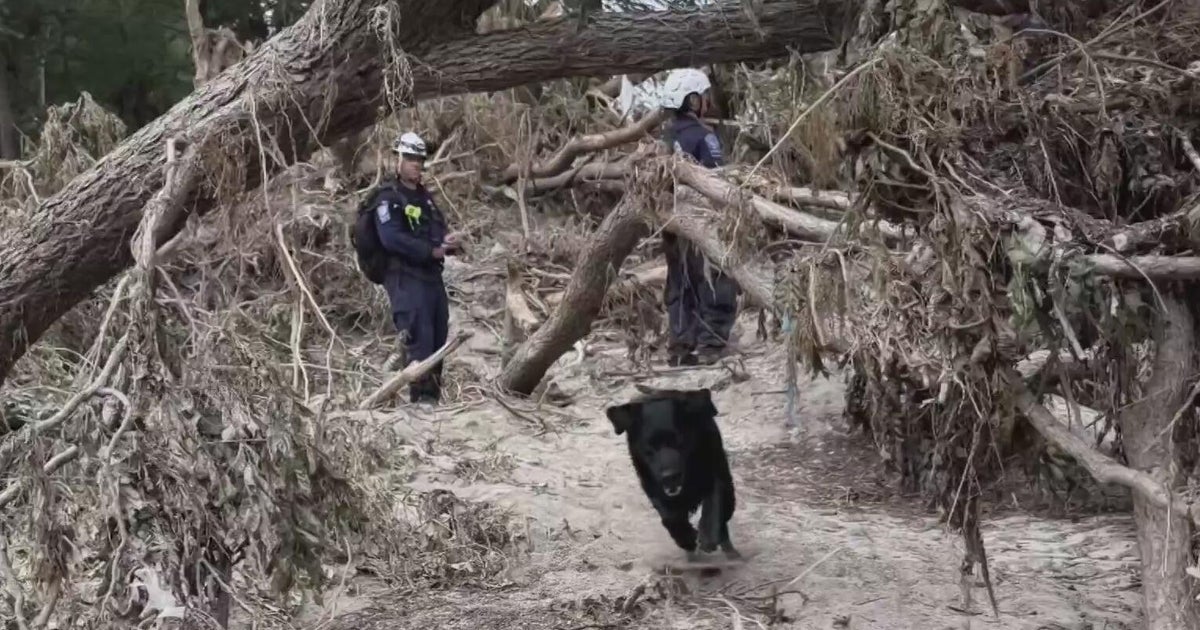Caltrans Seeking Permits To Demolish Bay Bridge Pier With Explosives, Despite Possible Marine Life Danger
OAKLAND (CBS SF) -- Caltrans is seeking permits to demolish the largest pier of the old eastern span of the Bay Bridge with explosives, a procedure that could be dangerous to native marine mammals, but Caltrans officials say it would have the least impact on bay wildlife.
Federal agencies are still taking public comment on the planned implosion, which if approved would take place this November.
Much of the obsolete bridge is slowly being deconstructed piece by piece, but Pier E3, a 268-foot-tall chunk of concrete set in the bay mud, could be pulverized in only six seconds.
Caltrans had originally intended to use cofferdams that would clear water from the area around the pier so crews could gradually demolish it, but such work could take many months, Caltrans spokeswoman Leah Robinson-Leach said. The agency determined a controlled implosion was the most efficient, cost-effective and environmentally sound way to remove the pier.
The planned demolition procedure would involve setting up an "air curtain" of pipes blowing compressed air through the water around the pier. More than 600 small explosives would be set in the concrete and detonated simultaneously, collapsing the rubble within the air curtain.
The biggest risk to surrounding wildlife - including seals, sea lions and porpoises - would be the sound of the explosion, which could injure or even kill the marine mammals.
Officials chose November to minimize the number of those animals in the water. Caltrans plans to monitor both visually and acoustically to make sure there are no animals in range, and would postpone the detonation if any were spotted.
While the plan would require making sure thousands of feet around the pier was free of potentially vulnerable wildlife, a scientist with watchdog group Baykeeper said today he thinks Caltrans has taken appropriate steps to mitigate impact to the marine wildlife.
In fact, the initial plan of mechanically dismantling it could have a larger impact as the work dragged on, according to Baykeeper staff scientist Ian Wren.
But Wren said he remains concerned that the implosion could throw concrete debris into the surrounding bay water and have effects on the water quality.
"We're not convinced that the air curtain is going to contain the concrete," he said.
Baykeeper is working with Caltrans to come up with ways to mitigate the environmental impact as best as they can. There may be some trade off for water quality impact versus wildlife impact, and they will be monitoring closely how the process goes as Caltrans may use a similar method in demolishing a dozen remaining support piers.
This pier, however, is the largest - the equivalent of bringing down a 5-story building - and will be the trickiest to bring down, Robinson-Leach said. It even may prove more cost effective and safer to bring down some of the piers in shallower water mechanically, she said.
Caltrans is awaiting permits from federal agencies including the U.S. Department of Commerce and the National Oceanic and Atmospheric Administration. Public comment on the proposal is open until Monday.
© Copyright 2015 by CBS San Francisco and Bay City News Service. All rights reserved. This material may not be published, broadcast, rewritten or redistributed.



